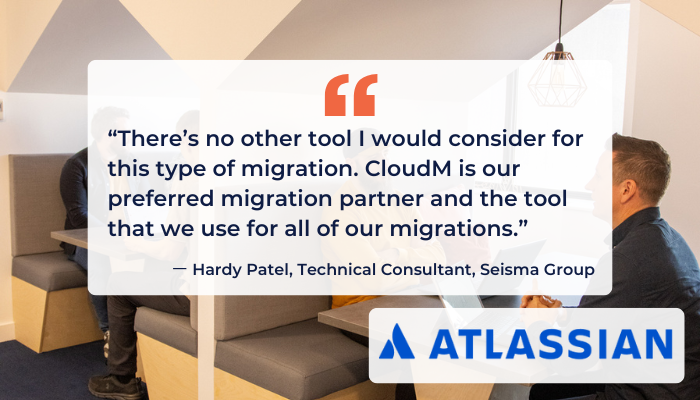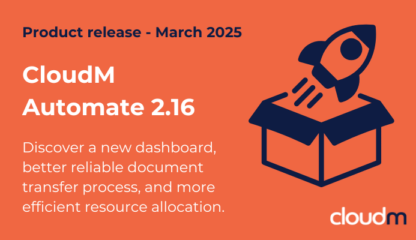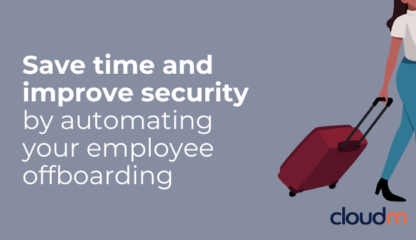
Speak to our migration specialists today
SharePoint migration: a comprehensive guide to seamless transitions
In today's digital landscape, organizations are constantly seeking ways to improve collaboration, streamline workflows, and enhance productivity. Read on to learn strategies for planning, executing and optimizing your migration to enhance collaboration and productivity.





In today’s digital landscape, organizations are constantly seeking ways to improve collaboration, streamline workflows, and enhance productivity. SharePoint, Microsoft’s powerful content management and collaboration platform, has become an integral part of many businesses’ IT infrastructure. However, as technologies and organizational needs evolve, many consider migrating to SharePoint Online to remain competitive.
This comprehensive guide will explore the intricacies of SharePoint Online migrations, providing you with the knowledge and strategies needed to ensure a successful transition. Whether you’re upgrading from an older on-premises version to SharePoint Online or moving between SharePoint Online environments, this article will equip you with the insights necessary to navigate the process effectively.
Understanding SharePoint Online migrations
What is a SharePoint migration?
A SharePoint migration is the process of transferring content, data, and configurations from one SharePoint environment to another. This can involve moving from an older version of SharePoint to a newer one, transitioning from on-premises to the cloud (SharePoint Online), or even migrating between different SharePoint Online tenants. In this guide, we will focus on the latter two use cases.
Why migrate to and from SharePoint?
Moving from an on-premise version of SharePoint to cloud-based SharePoint Online to enable scalability, automatic updates, and reduced infrastructure costs is the main incentive for migrations. In fact, according to a recent study by Gartner, by 2025, 85% of organizations will be “cloud-first,” and 95% of new digital workloads will be deployed on cloud-native platforms.
There are several other compelling reasons to consider a SharePoint migration:
- Improved security: modern SharePoint environments offer advanced security and compliance features.
- Enhanced collaboration: latest versions facilitate better teamwork with integrated Microsoft 365 apps.
- Mobile accessibility: SharePoint Online offers better mobile experiences for on-the-go productivity.
Planning your SharePoint Online migration
A successful SharePoint Online migration requires careful planning and execution. Here’s a step-by-step approach to ensure a smooth transition:
Executing the SharePoint Online migration
With thorough planning complete, it’s time to begin migrating.
1. Communicate with users
Keep stakeholders and end-users informed about:
- Migration timeline
- Expected downtime
- Changes in access or functionality
- Training opportunities for the new environment
3. Validate and test
After the migration, thoroughly test the new environment:
- Verify content integrity and completeness
- Check user permissions and access
- Test critical workflows and integrations
- Ensure that performance meets expectations
2. Migrate your data
Execute your migration plan, considering these best practices:
- Migrate in phases to minimize disruption
- Use incremental migration techniques for large datasets
- Monitor progress and performance throughout the process
- Document any issues or anomalies encountered
- Keep your stakeholders informed
4. Provide post-migration support
Offer robust support to users as they adapt to the new environment:
- Provide training sessions and documentation
- Set up a help desk for migration-related issues
- Gather feedback for continuous improvement
Future-proofing your SharePoint environment
After completing your migration, consider these strategies to ensure your SharePoint environment remains optimized:
Regular content audits
Periodically review and clean up content to maintain organization.
Continuous user training
Keep users updated on new features and best practices.
Monitoring and analytics
Use SharePoint’s built-in analytics to track usage and identify areas for improvement.
Scalability planning
Regularly assess your environment’s capacity and plan for future growth.
Stay informed
Keep up with Microsoft’s SharePoint roadmap to anticipate and prepare for upcoming features.
Common challenges and solutions
SharePoint migrations can present various challenges. Here are some common issues and strategies to address them:
Complex customizations
Challenge: custom solutions may not be compatible with the target environment.
Solution: evaluate each customization and consider rebuilding using modern development practices or finding alternative out-of-the-box solutions.
Large data volumes
Challenge: migrating terabytes of data can be time-consuming and costly.
Solution: use incremental migration techniques and consider data archiving strategies to reduce data size.
User adoption
Challenge: users may resist changes to their familiar SharePoint environment.
Solution: Implement a comprehensive change management plan, including early communication, training, and showcasing new features that benefit users.
Compliance and security
Challenge: ensuring data compliance and security during and after migration.
Solution: work closely with your compliance team and ensure third-party solutions satisfy your security requirements.
Tools for SharePoint migrations
Several tools can assist in the SharePoint migration process:

Sharepoint Migration Tool (SPMT)
Microsoft offers a free tool for migrating content to SharePoint Online and OneDrive. This is a good option for organizations with large, experienced IT departments who are able to complete the migration with minimal to no support.
Third-party solutions: CloudM Migrate
Solutions such as CloudM Migrate have been developed with a laser focus on your specific use case. With a team of experts on hand to support you, they can tackle even complex scenarios reliably and without fail. With robust security credentials and over 10 million migrations completed, your data is in safe hands with CloudM.
Conclusion
SharePoint migration, while complex, offers significant benefits for organizations looking to leverage the latest collaboration and content management capabilities. By following a structured approach to planning, execution, and post-migration optimization, you can ensure a smooth transition that sets your organization up for success in the digital workplace.
Remember, migration is not just a technical process but an opportunity to reimagine how your organization collaborates and manages information. Embrace this chance to optimize your information architecture, improve user experiences, and align your SharePoint environment with your broader digital transformation goals.
Book a call with our migration specialists today
















